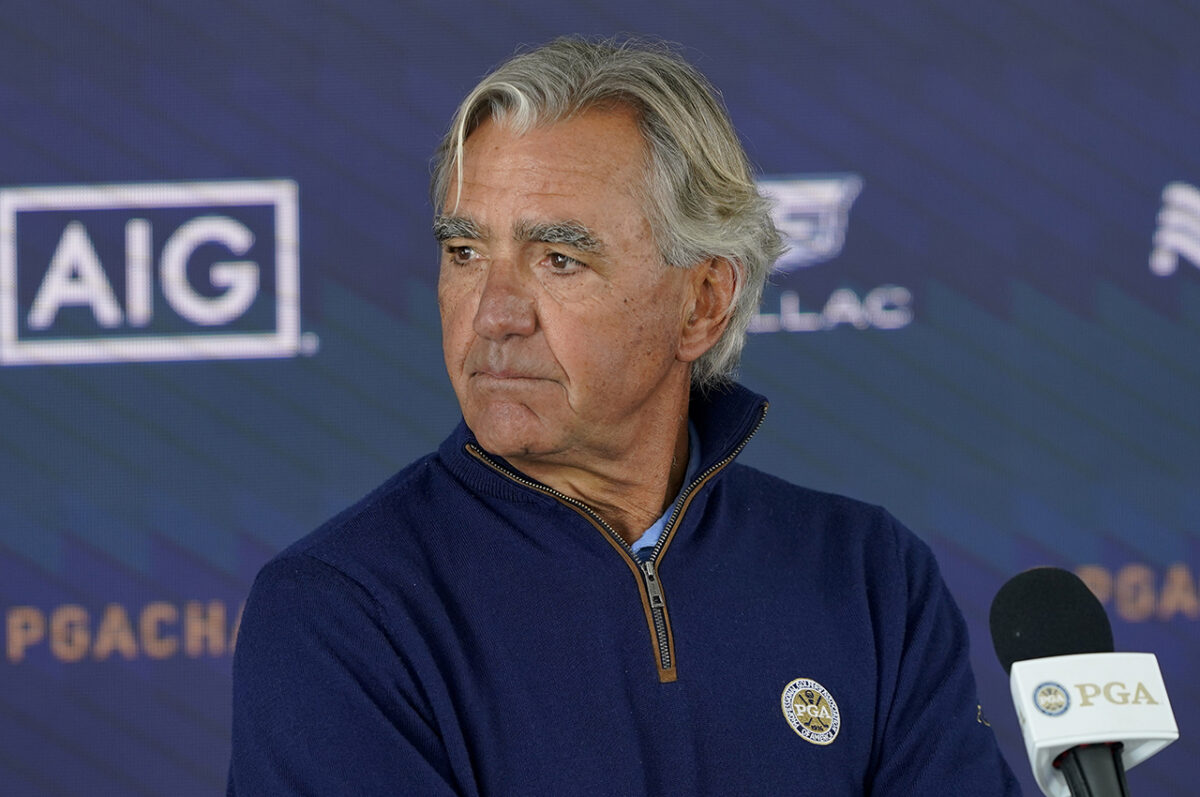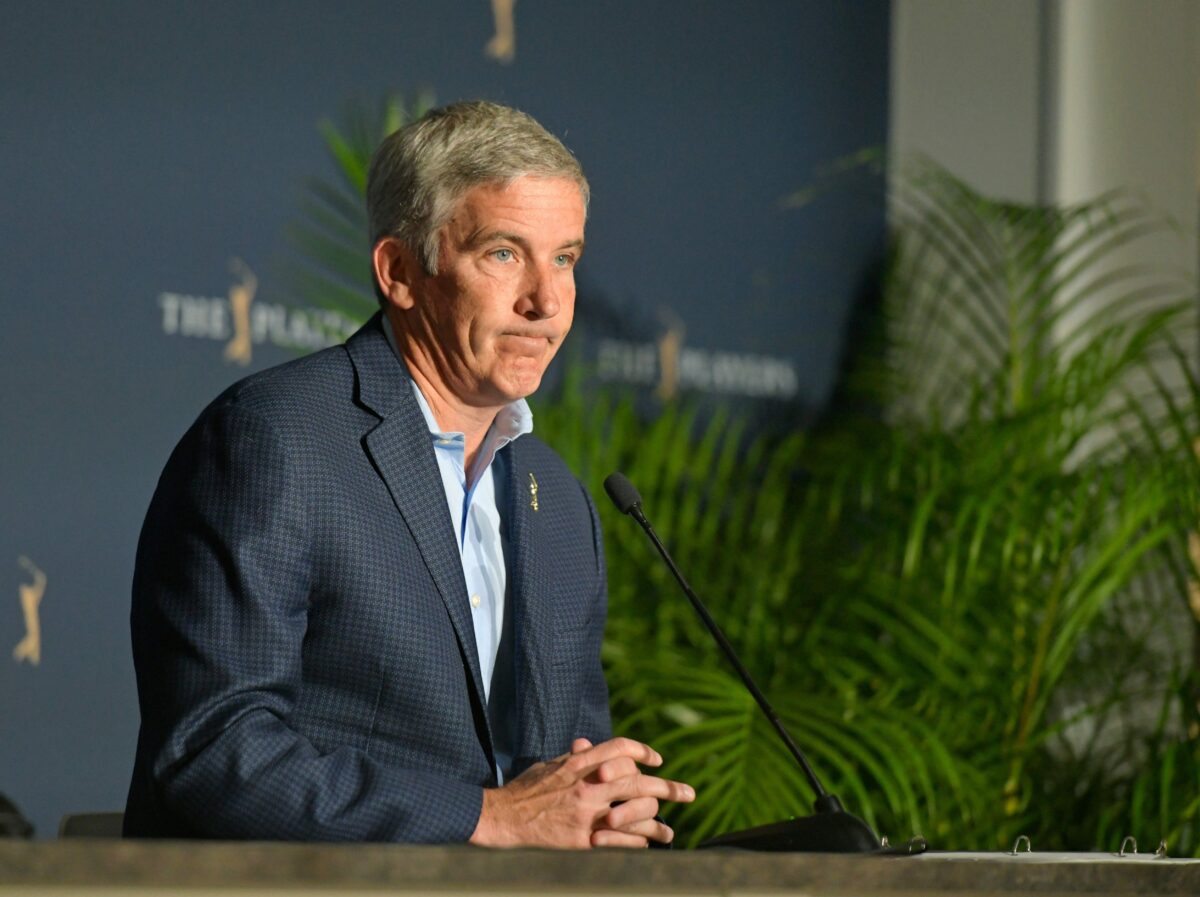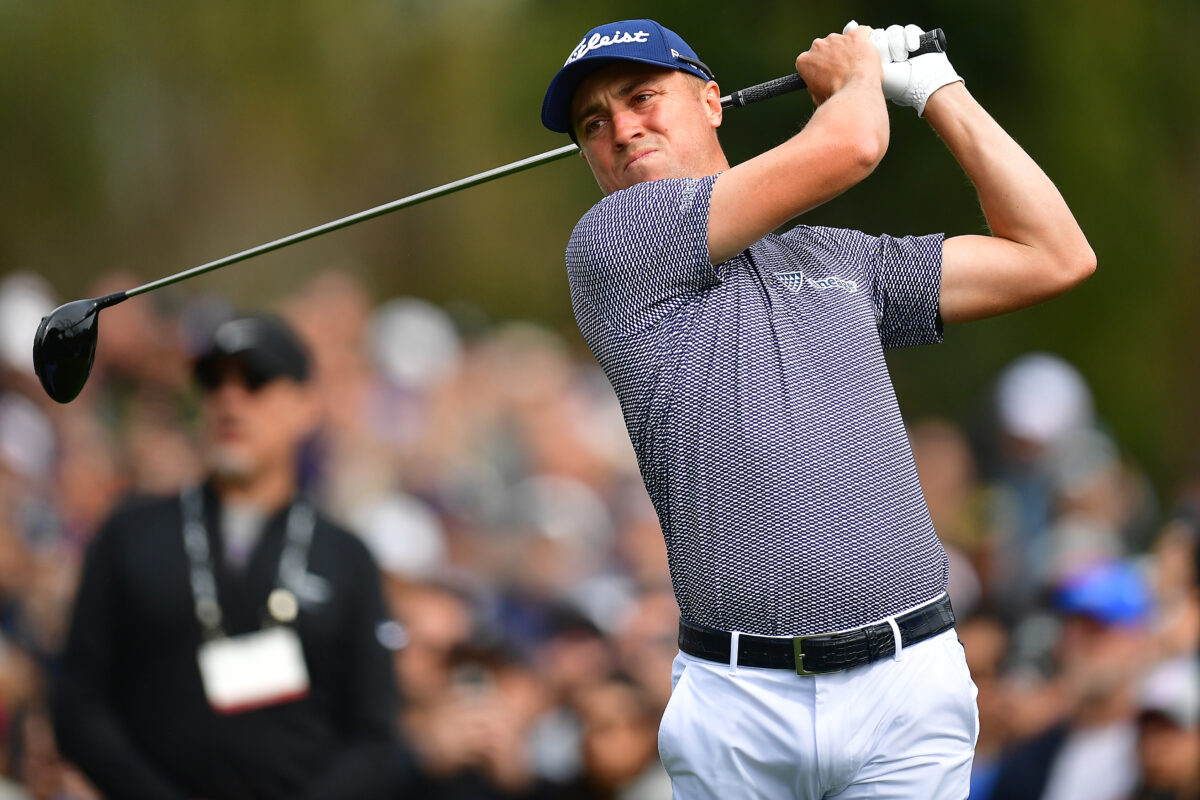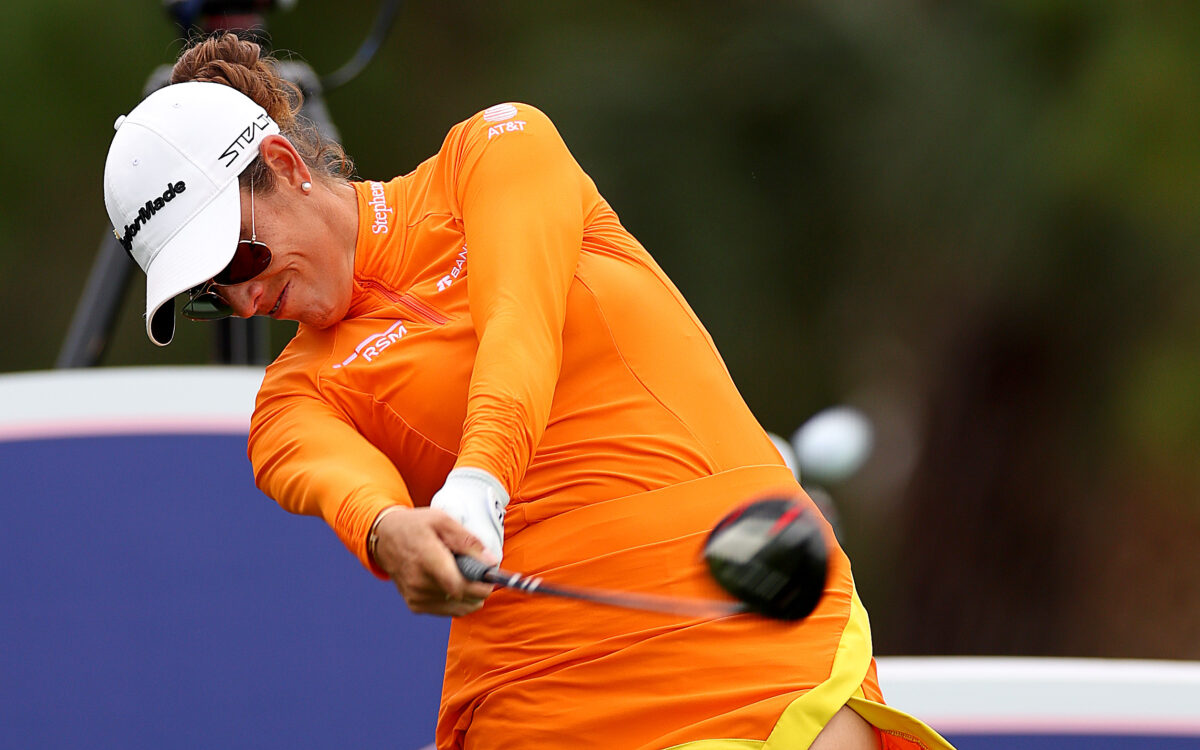[anyclip pubname=”2122″ widgetname=”0016M00002U0B1kQAF_M8171″]
Four months ago, Fred Ridley, the chairman of Augusta National Golf Club, strongly hinted that he and the club supported the USGA and R&A’s proposed Model Local Rule (MLR) that would mandate golfers in elite events use distance-reducing golf balls. Tiger Woods came out in support of the idea, and so did Rory McIlroy, giving the two governing bodies of golf some momentum in their battle against distance.
But as the comment period has continued, that momentum has slowed, and Monday, one of the biggest sports organizations in the world came out against the idea.
Golf Channel’s Rex Hoggard obtained a memo and posted it on Twitter that was written by the CEO of the PGA of America and sent to the USGA and R&A. In the memo, Waugh, who was writing as the head representative for the PGAs of America, Australia, Great Britain and several other countries, said that the groups, comprised of more than teaching professionals, course operators and others in the golf industry would not support the idea of the Model Local Rule.
World Alliance of PGA’s (including the PGA of America) push back on proposed Model Local Rule on the golf ball, in memo obtained by https://t.co/ojzg81G2up pic.twitter.com/wpBfzkrzPX
— Rex Hoggard (@RexHoggardGC) August 7, 2023
“We fear that the proposed changes could seriously interrupt the current momentum in the game and be fundamentally damaging and detrimental in the long run,” Waugh wrote. “We are also very aware that there are sets of data that conflict with the R&A and USA materials. This is confusing and, in our view, needs to be considered fully, reviewed and clarified prior to any final decision being made.”
He went on to state: “For the whole industry to buy into any changes, we feel it is very important that everyone agrees with one set of data to be used to establish the basis of dramatic change. Also, to be abundantly clear as regards to the current proposal, after much thought and conversation, we arrived at full agreement as a group that we firmly oppose bifurcation for the following reasons.”
Golfweek contacted representatives of the USGA and asked for comment, then received the following statement:
We remain in a Notice & Comment period, accepting feedback from voices from across the game. The PGA is an important stakeholder and we appreciate the feedback they have contributed to this conversation.
The comment period on the proposed Model Local Rule is scheduled to conclude on next Monday, August 14.
Less than two weeks ago, a similar memo was written by Jay Monahan and sent PGA Tour players, explaining that the PGA Tour had informed the USGA and R&A that it was not in favor of the Model Local Rule in its current form.
The PGA Tour and the Alliance of PGAs cannot stop the USGA and the R&A from creating the Model Local Rule, but if they choose not to adopt it and implement it in the events they operate, it would be a massive blow to the overall acceptance of the MLR.
The USGA operates the U.S. Open, U.S. Women’s Open and several other championships, while the R&A runs the British Open, Women’s British Open and numerous tournaments as well. Mike Whan, the CEO of the USGA, and Martin Slumbers, his counterpart at the R&A, have stated that if the MLR is created, they plan to adopt it starting in 2026 at their elite men’s events.
However, the PGA of America runs the PGA Championship. If Seth Waugh and the PGA of America decided not to adopt the MLR, it is possible that the Masters, U.S. Open and British Opens would require golfers to use a different ball than they would use at the PGA Championship, the Players Championship and week-to-week PGA Tour events.
While the USGA and R&A’s proposed MLR is not intended to be adopted at the club level or at most amateur competitions, Waugh wrote that the proposal would create confusion, more work for PGA of America members and ultimately lead to bifurcation (the use to different rules governing professionals and recreational golfers). The USGA and R&A have adamantly stated that there are already several Model Local Rules, and tournaments are free to adopt them or not adopt them as they see fit. In the eyes of the USGA and the R&A, the creation of a Model Local Rule that requires elite golfers to use reduce-distance balls would not create a separate set of rules, but many people and organizations do not agree.
“Lastly and importantly, the suggestion that elite women should play the ‘recreational ball’ could be viewed very negatively at a time when we are all trying to promote and champion women’s golf and participation,” Waugh wrote.
In an interview with Golfweek, Mike Whan said that he does not feel there is a distance problem in women’s golf and hinted that the USGA would likely not adopt the MLR at the Women’s U.S. Open.
After the conclusion of the Notice & Comment period, the USGA and R&A are expected to study the comments and announce a decision on the Model Local Rule, possibly with six months.











